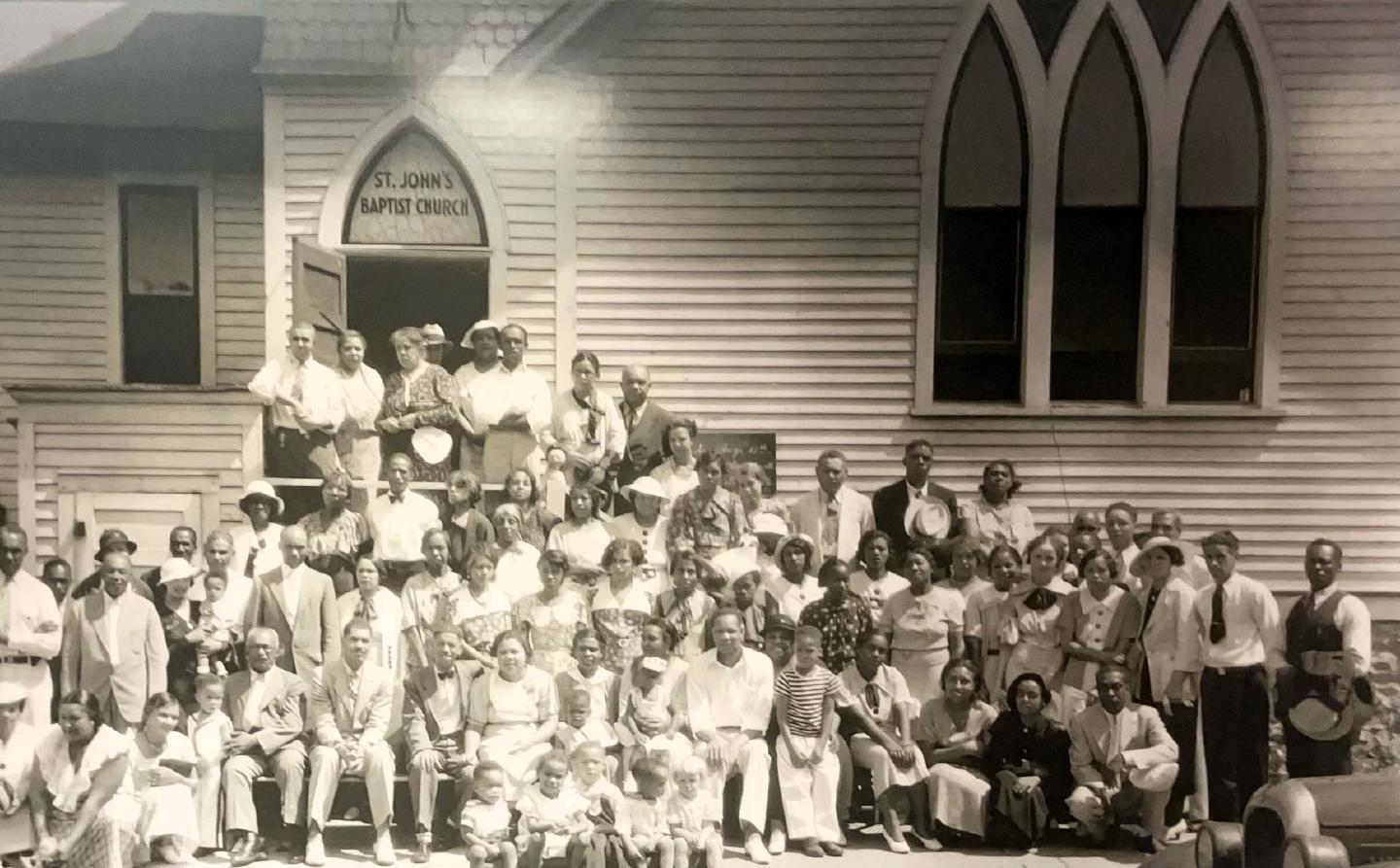St. John's Baptist Church of Sioux Falls

Sioux Falls’ St. John’s Baptist Church helped provide space for African Americans to not only join in religious worship but unite as a community. From 1917 to 1980s, the congregation formed the social epicenter of Black life.
At 11 a.m., bells rang to signal time for worship to begin at St. John’s Baptist Church. LaBerta Bentley approached the lectern to lead the congregation, which encompassed sixty-five registered members by 1940, in singing “Lord Able To Make A Way.” Rev. Mathew Withers preached on the subject of the Book of Jonah. At the conclusion of the service, the St. John’s community gathered in the basement for a potluck meal. St. John’s Baptist Church was a place where the African American community could gather in comfort and safety. St. John’s member Phyllis White recalled feeling immersed in White society on weekdays, but because of the church, she felt Black on weekends. St. John’s Baptist Church held an important social and political role in the Black community throughout the twentieth century.
In 1917, a small group of African American teenagers in Sioux Falls yearned for a religious community to call their own, a community that would meet in fellowship and give support to one another during trying times. Seventeen-year-old LaBerta Smith (Bentley), who came to Sioux Falls from Mississippi to train as a beautician, was the oldest of the group that advocated to form a Baptist congregation. The congregation originally met in the Old City Hall, where White minister Rev. A.K. Gibbs led worship services. The small flock officially coined the name St. John’s in 1920, and continued to meet in a courtroom until 1930 when they purchased a former Jewish synagogue. Rev. Withers took over as head of the congregation in 1918, serving for some twenty-odd years and overseeing tremendous growth in the congregation’s size. The church building remained at the site until it was demolished in the late 1980s, now the site of VanEps Park.
St. John’s not only cultivated the Baptist faith tradition, but it also served as a hub for political causes over the twentieth century. During World War II, Sioux Falls was home of military training camps with thousands of soldiers stationed at Joe Foss Field, including over three hundred African Americans. Because Black servicemen and their families were denied service at restaurants, hotels, and other accommodations, St. John’s members created a Black USO Center in the church basement for a welcoming social club and even sheltered African American travelers at the Booker T. Washington Center. The church was a centralized spot for people to find employment connections and overall support. It was used as a meeting place for the Sioux Falls NAACP, a group that worked to ensure legal protections for racial equality. Just two years before the famous “I Have a Dream” speech at the Washington Mall, Rev. Martin Luther King Jr. visited Sioux Falls. Dr. King came to speak at the Knife and Forks Club downtown at the Cataract Hotel, but he stayed at the parsonage at St. John’s with Rev. Ardie Hayes and took the opportunity to speak with the congregation. While visiting the church, he pulled the small number of Black youth including Phyllis White aside to ask them about what racial segregation looked like in the Sioux Falls community and schools.
For Sioux Falls’ Black residents, St. John’s Baptist Church was a social epicenter of the community. Congregation members kept close tabs on everyone within the church and formed a second family within the church. One way to build connections was to organized community picnics that showcase job opportunities and social life. During the twentieth century, the Black population of Sioux Falls was small; therefore, it wasn’t difficult to hear about African American newcomers moving into the city. Since the number of Black congregations were limited in town, it was easy to navigate where to seek religious needs; ministers of the churches even sought after everyone to help social needs. In 1930, Pilgrim Baptist Church split off due to having different leadership values, resulting in two Black churches in the Sioux Falls area. St. John’s and Pilgrim Baptist both played a vital role in not only the religious aspect of the members but a sense of having others around them to give everyone extra family.
St. John’s and Pilgrim merged back together in the 1980s and created Friendship Baptist Church, which continues as an active congregation today. Although the physical building for St. John's is not here now, the influence that the church played in the Black community in Sioux Falls is enduring. Here at VanEps Park, the Martin Luther King, Jr. statue, sculpted by local artist Porter Williams and dedicated in 2020, stands on the site of the former church building and serves as a reference to its history.Images


